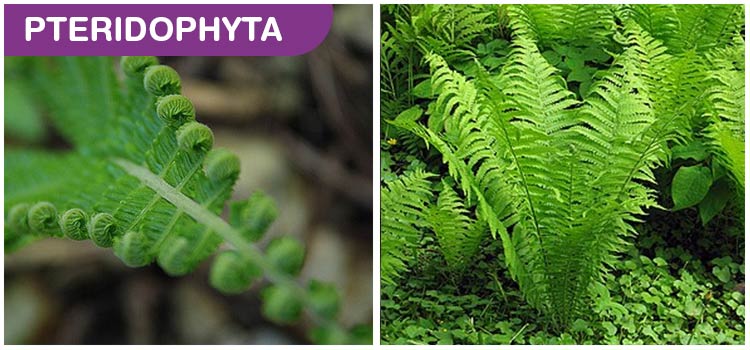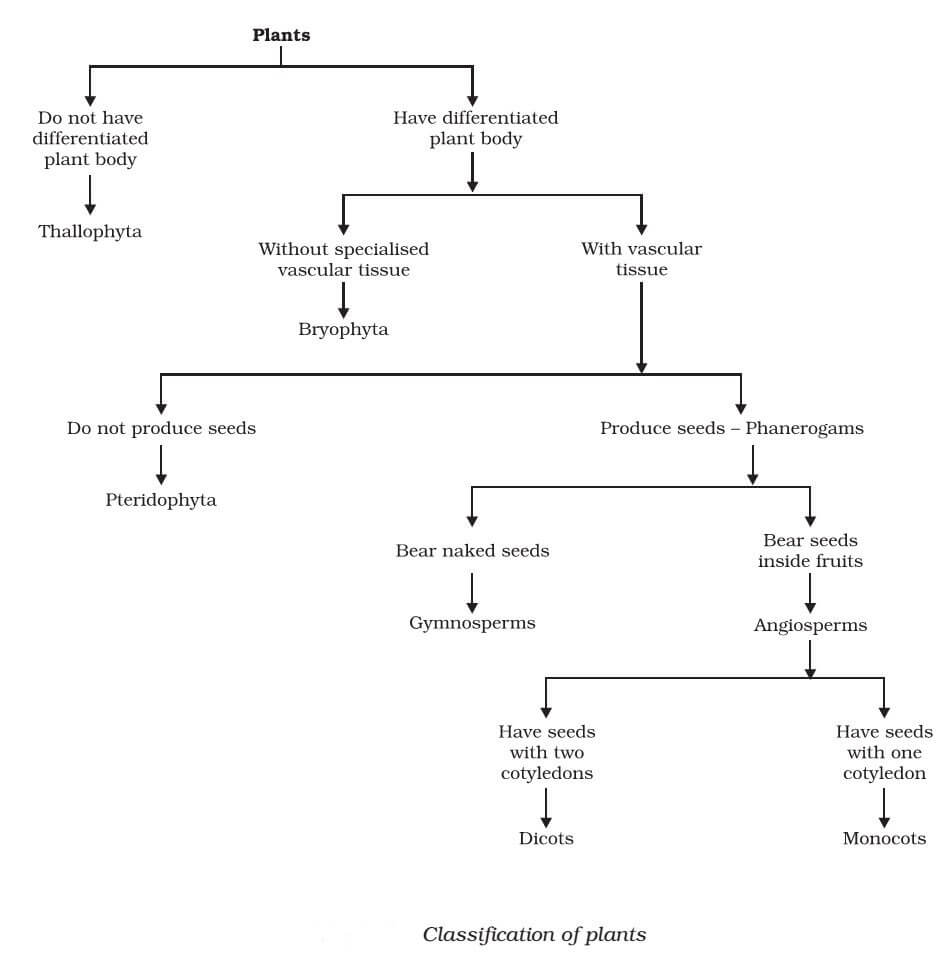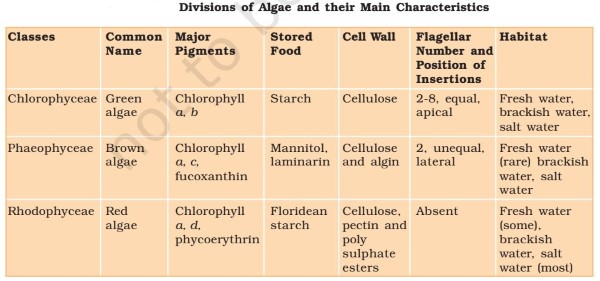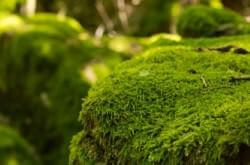Plant Kingdom – Thallophytes (Algae) – Bryophytes – Pteridophytes

Plantae
- Classification among plants depends on
- whether the plant body has well differentiated, distinct components,
- whether the differentiated plant body has special tissues for the transport of water and other substances within it,
- ability to bear seeds, and
- whether the seeds are enclosed within fruits.
- Phylogenetic classification [evolutionary relationships], cytotaxonomy [cytological information like chromosome number, structure, behavior] and chemotaxonomy [chemical constituents of the plant], are used by taxonomists for classifying plants.

Plant Kingdom
- Plants are multicellular eukaryotes with cell walls mainly made of cellulose {Plant Cell vs. Animal Cell}.
- They are autotrophs and use chlorophyll for photosynthesis. A few members are partially heterotrophic such as the insectivorous plants or parasites. Bladderwort and Venus fly trap are examples of insectivorous plants and Cuscuta is a parasite.
- Plantae includes algae, bryophytes, pteridophytes, gymnosperms and angiosperms.
- Fungi, and members of the Monera and Protista having cell walls have now been excluded from Plantae. So, the cyanobacteria that are also referred to as blue green algae are not ‘algae’ any more.
Algae – Thallophytes
- Plants that do not have well-differentiated body design fall in this group. They are commonly called algae.
- Algae are chlorophyll-bearing, simple, thalloid, autotrophic and largely aquatic (both fresh water and marine) organisms.
[Thallus == a plant body not differentiated into stem, leaves, and roots and without a vascular system, typical of algae, fungi, lichens, and some liverworts].
- They occur in a variety of other habitats: moist stones, soils and wood. Some of them also occur in association with fungi (lichen) and animals (e.g., on sloth bear).
- The form and size of algae is highly variable. The size ranges from the microscopic unicellular forms like Chlamydomonas, to colonial forms like Volvox and to the filamentous forms like Ulothrix and Spirogyra. A few of the marine forms such as kelps, form massive plant bodies.
- The algae reproduce by vegetative, asexual and sexual methods. Vegetative reproduction is by fragmentation. Each fragment develops into a thallus.
- Asexual reproduction is by the production of different types of spores, the most common being the zoospores [capable of swimming by means of a flagellum]. They are flagellated (motile) and on germination gives rise to new plants.
- Sexual reproduction takes place through fusion of two gametes. These gametes can be flagellated and similar in size (as in Chlamydomonas) or non-flagellated (non-motile) but similar in size (as in Spirogyra). Such reproduction is called isogamous [Fusion of two gametes similar in size].
- Fusion of two gametes dissimilar in size, as in some species of Chlamydomonas is termed as anisogamous.
- Fusion between one large, non-motile (static) female gamete and a smaller, motile male gamete is termed oogamous, e.g., Volvox, Fucus. [Compare this with human sperm and ovum]
Chlorophyceae – Green Algae
- The members of chlorophyceae are commonly called green algae.
- The plant body may be unicellular, colonial or filamentous.
- They are usually grass green due to the dominance of pigments chlorophyll a and b. The pigments are localised in definite chloroplasts.
- Most of the members have one or more storage bodies called pyrenoids located in the chloroplasts. Pyrenoids contain protein besides starch. Some algae may store food in the form of oil droplets.
- Green algae usually have a rigid cell wall made of an inner layer of cellulose and an outer layer of pectose.
- Vegetative reproduction usually takes place by fragmentation or by formation of different types of spores.
- Asexual reproduction is by flagellated zoospores produced in zoosporangia.
- The sexual reproduction shows considerable variation in the type and formation of sex cells and it may be isogamous, anisogamous or oogamous.
- Some commonly found green algae are: Chlamydomonas, Volvox, Ulothrix, Spirogyra and Chara.
Phaeophyceae – Brown Algae
- The members of phaeophyceae or brown algae are found primarily in marine habitats.
- They show great variation in size and form. They range from simple branched, filamentous forms (Ectocarpus) to profusely branched forms as represented by kelps, which may reach a height of 100 metres.
- They possess chlorophyll a, c, carotenoids and xanthophylls. They vary in colour from olive green to various shades of brown depending upon the amount of the xanthophyll pigment, fucoxanthin present in them.
- The vegetative cells have a cellulosic wall usually covered on the outside by a gelatinous coating of algin. The protoplast contains, in addition to plastids, a centrally located vacuole and nucleus.
- Vegetative reproduction takes place by fragmentation.
- Asexual reproduction in most brown algae is by biflagellate zoospores that are pear-shaped and have two unequal laterally attached flagella.
- Sexual reproduction maybe isogamous, anisogamous or oogamous.
- Union of gametes may take place in water or within the oogonium (oogamous species).
- The gametes are pyriform (pear-shaped) and bear two laterally attached flagella.
- The common forms are Ectocarpus, Dictyota, Laminaria, Sargassum and Fucus.
Rhodophyceae – Red Algae
- The members of rhodophyceae are commonly called red algae because of the predominance of the red pigment, r-phycoerythrin in their body.
- Majority of the red algae are marine with greater concentrations found in the warmer areas.
- They occur in both well-lighted regions close to the surface of water and also at great depths in oceans where relatively little light penetrates.
- The red thalli of most of the red algae are multicellular. Some of them have complex body organisation.
- The food is stored as floridean starch which is very similar to amylopectin and glycogen in structure.
- The red algae usually reproduce vegetatively by fragmentation.
- They reproduce asexually by non-motile spores and sexually by non-motile gametes.
- Sexual reproduction is oogamous.
- The common members are: Polysiphonia, Porphyra, Gracilaria and Gelidium.
Uses of algae
- Algae are useful to man in a variety of ways. At least a half of the total carbon dioxide fixation on earth is carried out by algae through photosynthesis.
- Being photosynthetic they increase the level of dissolved oxygen in their immediate environment.
- They are of paramount importance as primary producers of energy-rich compounds which form the basis of the food cycles of all aquatic animals.
- Many species of Porphyra, Laminaria and Sargassum are among the 70 species of marine algae used as food.
- Certain marine brown and red algae produce large amounts of hydrocolloids (water holding substances), e.g., algin (brown algae) and carrageen (red algae) which are used commercially.
- Agar, one of the commercial products obtained from Gelidium and Gracilaria are used to grow microbes and in preparations of ice-creams and jellies.
- Chlorella a unicellular alga, rich in proteins is used as food supplement even by space travellers.
- The algae are divided into three main classes: Chlorophyceae, Phaeophyceae and Rhodophyceae.

Bryophytes
- Bryophytes are called amphibians of the plant kingdom because these plants can live in soil but are dependent on water for sexual reproduction.
- The plant body is commonly differentiated to form stem and leaf-like structures. However, there is no specialized tissue for the conduction of water and other substances from one part of the plant body to another.
- Bryophytes include the various mosses (funaria), marchantia and liverworts that are found commonly growing in damp, humid and shaded localities. They play an important role in plant succession on bare rocks/soil.

- The plant body of bryophytes is more differentiated than that of algae. It is thallus-like and erect, and attached to the substratum by unicellular or multicellular rhizoids [root like structures].
- They lack true roots, stem or leaves. They may possess root-like, leaf-like or stem-like structures.
- The main plant body of the bryophyte is haploid. It produces gametes, hence is called a gametophyte.
- The sex organs in bryophytes are multicellular. The male sex organ is called antheridium. They produce biflagellate antherozoids. The female sex organ called archegonium is flask-shaped and produces a single egg.
- The antherozoids are released into water where they come in contact with archegonium. An antherozoid fuses with the egg to produce the zygote.
- Zygotes do not undergo reduction division [Meiosis] immediately. They produce a multicellular body called a sporophyte. The sporophyte is not free-living but attached to the photosynthetic gametophyte and derives nourishment from it.
- Some cells of the sporophyte undergo reduction division (meiosis) to produce haploid spores. These spores germinate to produce gametophyte.
- Bryophytes in general are of little economic importance but some mosses provide food for herbaceous mammals, birds and other animals.
- Species of Sphagnum, a moss, provide peat that have long been used as fuel, and as packing material for trans-shipment of living material because of their capacity to hold water.
- Mosses along with lichens are the first organisms to colonise rocks and hence, are of great ecological importance. They decompose rocks making the substrate suitable for the growth of higher plants.
- Since mosses form dense mats on the soil, they reduce the impact of falling rain and prevent soil erosion. The bryophytes are divided into liverworts and mosses.
Pteridophytes
- In this group, the plant body is differentiated into roots, stem and leaves and has specialized tissue for the conduction of water and other substances from one part of the plant body to another. Some examples are marsilea, ferns and horse-tails.
- Pteridophytes are used for medicinal purposes and as soil-binders. They are also frequently grown as ornamentals.

- Evolutionarily, they are the first terrestrial plants to possess vascular tissues – xylem and phloem.
- The pteridophytes are found in cool, damp, shady places though some may flourish well in sandy-soil conditions.
- You may recall that in bryophytes the dominant phase in the life cycle is the gametophytic plant body. However, in pteridophytes, the main plant body is a sporophyte which is differentiated into true root, stem and leaves.
- These organs possess well-differentiated vascular tissues. The leaves in pteridophyta are small (microphylls) as in Selaginella or large (macrophylls) as in ferns.
- The spores germinate to give rise to inconspicuous, small but multicellular, free-living, mostly photosynthetic thalloid gametophytes called prothallus.
- These gametophytes require cool, damp, shady places to grow. Because of this specific restricted requirement and the need for water for fertilisation, the spread of living pteridophytes is limited and restricted to narrow geographical regions.
Cryptogamae
- The thallophytes, the bryophytes and the pteridophytes have naked embryos that are called spores.
- The reproductive organs of plants in all these three groups are very inconspicuous, and they are therefore called ‘cryptogamae’, or ‘those with hidden reproductive organs’.